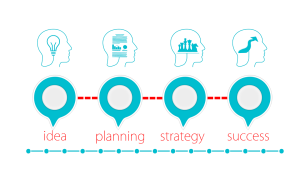Employee burnout is a significant challenge that companies worldwide grapple with, often stemming from a misalignment between an individual’s strengths and their work responsibilities. Have you ever felt your motivation at work slipping away, leading to stress and a sense of overwhelming fatigue? Understanding your unique strengths can be a powerful antidote to these feelings. Tools like the HIGH5 strengths assessment can provide valuable insights into your natural talents, helping you and your organization create a work environment that leverages these strengths, potentially reducing the risk of burnout and enhancing overall job satisfaction.
This condition causes a feeling of helplessness, hope and energy is lost, and stress and nervousness become the main rulers over an individual’s life. Therefore, it is very important to be familiar with what employee burnout is and how to treat this type of problem.
This article will answer questions regarding this condition and will help to look at things from a different angle.
What Is Employee Burnout?
Employee burnout is a condition that happens to employees when they exhaust their mental and physical energy. The stress and frustrations they face negatively affect the individual and he falls into a vicious circle from which it seems difficult to get out.
The cause of this condition can be the work environment, as well as certain business tasks that demotivate the individual and the desire to progress.
The job can be stressful, and the lack of support and strength can easily push employees into a corner. In addition, reasons for burnout at the core represent employee expectations and self-disappointment.
Employee burnout can happen to anyone, regardless of their current situation. However, self-awareness is a powerful tool in preventing and addressing burnout. By understanding their unique strengths through assessments like the HIGH5 test, employees can gain valuable insights into their natural talents and how to leverage them effectively. This self-knowledge not only enhances job satisfaction but also helps individuals navigate challenging work environments more successfully, potentially reducing the risk of burnout.
Pro Tip From HIGH5
Identify your top strengths using the HIGH5 test and consciously apply them in your daily work. For instance, if ‘Creativity’ is one of your strengths, seek opportunities to innovate in your role. This alignment between your natural talents and your work can increase engagement and resilience, helping to ward off burnout.
How Does Employee Burnout Affect Organizations
The cost of employee burnout is not only a personal problem of the employee; it also becomes a problem of the whole organization, as well as the whole team.
By losing key employees, the organization can disrupt its rhythm as well as lower its revenue.
Here is a list of 5 examples of how employee burnout can affect an organization:
Loss of Employees
Employees do not feel comfortable in the atmosphere in which they find themselves and often go to other employers.
That way, very good and hard-working people can leave the organization for reasons that aren’t all that serious.
Low Morale
The prices of shares of companies that have employees with high morale have more than doubled compared to the prices of ones that suffer from low morale.
That alone speaks volumes about how vital morale can be. Our research on employee motivation statistics confirms it. We found that employees who are reporting high motivation levels are 70% less likely to change jobs or careers. That is a monument confirmation of how important employee motivation is.
Worsened Health
Effects of Employee burnout can lead to heart problems, gastrointestinal problems, and even death.
When we look at things from an organization’s perspective, on average most companies spend about 100 million a year for health care.
Collective Disappointment
It is very important to have a healthy team, which communicates and creates together.
If employee stress levels occur due to disagreement in the team, it can affect the job and the further performance of business obligations.
Unfinished Tasks
If a high-performing employee burnout occurs, productivity weakens and it becomes difficult to motivate employee morale.
If employees are not motivated, there is a reduction in the employee’s performance such as quality, speed, and efficiency needed to do things quickly and successfully.
How Do You Deal With a Burnout Employee?
Employee burnout can truly be devastating to a team. One way you can ease employee burnout is by giving employees more breaks. Ensure that they feel comfortable with taking a break during the day.
If they need to take some time off of work, be open to that as well. Also, try to resolve workplace conflicts as quickly as possible. These conflicts can be draining to everyone involved.
Assigning tasks based on an individual’s strengths is a powerful strategy to combat burnout. By utilizing tools like the HIGH5 strengths assessment, managers can gain a clear understanding of each team member’s unique talents. This knowledge allows for more strategic task allocation, aligning work with natural abilities, which in turn boosts motivation and passion. For instance, an employee with a strength in ‘Problem Solving’ might thrive when given complex challenges, while someone with ‘Empathy’ as a top strength could excel in customer-facing roles. This strengths-based approach, combined with ensuring adequate time off of work, is crucial for maintaining overall well-being and sustained productivity.
Pro Tip From HIGH5
Encourage your team to take the HIGH5 test and share their results. Use this information to create a strengths map of your team. When assigning projects or forming task forces, refer to this map to ensure you’re leveraging each team member’s natural talents. This approach not only boosts productivity but also increases job satisfaction and reduces the risk of burnout.
What Are the Five Symptoms of Burnout?
Every employee expresses their burnout differently. This is why knowing your employees and consistent communication is important.
However, you should watch out for the following burnout warning signs: employees who are unengaged, lack of passion in an employee, productivity dips, employee complaints of exhaustion, and employees who are often sick or stressed.
6 Causes of Employee Burnout
This problem can arise in various ways, depending on the situation in which the employee finds himself. Stress, feelings of helplessness, and weakness are just some of the feelings that occur when an individual finds himself in this situation.
It is of great importance to determine what causes such feelings, in order to later succeed in escaping from this state (read more on employee experience management).
Here are some of the most common causes:
Unequal Treatment in the Workplace
If employees agree that their unfair treatment is not the same, as well as that they feel uncomfortable at work because of that, the problem is very obvious.
When there is no team spirit and tasks aren’t fairly distributed, there is dissatisfaction and disappointment in all employees.
Precisely because of this, when a person does not trust his manager as well as his associates, the work collective disintegrates.
Too Much Workload
Workload imbalance is a common cause of burnout, affecting even the most diligent employees. When tasks aren’t aligned with an individual’s natural strengths, the work can feel more draining and lead to quicker exhaustion. By implementing a strengths-based approach using tools like the HIGH5 assessment, organizations can better match tasks to employees’ innate talents. This alignment not only improves efficiency but also maintains motivation and energy levels. For example, an employee with ‘Focus’ as a top strength might excel in detail-oriented tasks, while someone with ‘Strategizer’ as a key strength could thrive in long-term planning roles. By understanding and leveraging these strengths, companies can prevent the transformation of once-optimistic workers into stressed, demotivated individuals.
Managers often give tasks to the engaged employees they believe they can fulfill. However, that is not always an efficient solution.
Employees get overburdened, and often in an effort to do extra work efficiently, motivation gets lost and the employee begins to feel uncomfortable at work.
Lack of Manager Support
When an employee has a sense of support from their manager, they are much more likely to stay in their organizations and perform their business tasks with ease and without pressure.
If there is no adequate communication between the manager and the employee, pressure appears, and it most often causes stress, anxiety, and a feeling of fear.
Constant Pressure
Those employees who have additional time to do their job are less likely to experience the impact of Employee burnout.
On the other hand, employees who face unrealistic time pressures are often affected by stress and frustration because they are unable to meet their obligations on time.
Fear of Failure
It is known that everyone makes mistakes sometimes and that is completely normal. However, some workplaces tend to punish their employees for each error they make.
In such places the environment becomes much more stressful, the employees all work under great pressure and in fear of making even a small mistake.
This way of working is not healthy and very often causes signs of burnout.
Insufficient Payment
Human health risk often increases when it comes to monetary compensation for a given job.
Sometimes business demands can be extremely high and strenuous, and the compensation an employee receives for the work done is small.
Then there is a riot and the employee immediately thinks that he was not paid as much as he should have been.
How Do You Identify Employee Burnout?
The best way to identify employee burnout is to directly ask your workers. Ensure they trust you and feel comfortable telling you that they are burnt out. Also, watch for employees who seem exhausted.
If an employee must begin an especially large or stressful project, monitor their productivity. Large dips in productivity could signify a lack of engagement or burnout.
How To Prevent Employee Burnout?
Preventing employee burnout requires proactive measures and a deep understanding of individual strengths and motivations. One powerful technique is to implement strengths-based assessments, such as the HIGH5 test, across the organization. By identifying each employee’s unique strengths, companies can create personalized strategies to prevent burnout. For instance, an employee with ‘Believer’ as a top strength might benefit from projects that align closely with the company’s mission, while someone with ‘Time Keeper’ as a key strength could excel with flexible scheduling.
Remember, no problem disappears on its own, and addressing burnout starts with understanding the individual. Once you’ve identified each person’s strengths through tools like HIGH5, you can tailor your approach to resolve potential burnout situations before they escalate.
Here are some techniques that will help channel stress in this condition:
Relaxation
Relaxation is very important in moments when we are affected by stress. In order for an individual to relax, he can undertake breathing exercises.
Also, meditation is an ideal escape from reality where a person can relax and exclude himself from the world that awakens negativity in him.

Motivation
Without motivation, it is impossible to work, impossible to live, and perform tasks effectively. When motivation is lost, it needs to be found.
Positive thoughts must replace negative ones. It is necessary to find at least one part of the job that is interesting to him and start little by little, until the motivation returns on its own.
Talking and Sharing Your Problems
If the environment is an overburdening problem, one-on-one talks with your co-workers can help prevent gaps and inconveniences. Sometimes people can’t figure out what the real problem is and what its essence is until they talk.
Pro Tip From HIGH5
Schedule quarterly ‘strengths check-ins’ with your team members. Use their HIGH5 test results as a starting point to discuss how they’re utilizing their strengths in their current roles. If there’s a mismatch, work together to find ways to incorporate their strengths more fully into their daily tasks. This ongoing dialogue can help prevent burnout by ensuring employees feel valued and are working in alignment with their natural talents.
Types of Burnout in the Workplace
There are different types and levels of burnout that people are not even aware of. When these conditions can be differentiated, they can be affected much more easily.
These are the three basic types:
Overload Burnout
When it comes to this type of employee at risk for burnout, employees are geared towards working much harder.
They risk their private lives as well as their health for the sake of a job that is becoming too cumbersome and demanding. Their ambition comes first, and everything else suffers.
Under-challenge Burnout
This implies a feeling of inviolability, a lack of opportunities that could represent an opportunity to learn. Boredom is involved, and it’s hard to ensure employees work because they don’t have a passion for their jobs.
The energy in the collective is also low, and individuals cannot find the strength and motivation to work, so employee risk for burnout occurs.
Neglect Burnout
Feeling helpless is something that can be a big problem. An employee can often feel like they can’t complete certain tasks, and are also falling behind in their work.
Such a person is also not motivated and has no desire to prove himself in the collective because he feels like he is below everyone else.
Key Statistics on Employee Burnout
It is known that this condition can be common and can happen to anyone. It often occurs because of personal reasons or situations that the person cannot control.
However, it is very important to prevent employee burnout crisis in order to improve the organization’s operations, preserve the driving energy in the team and maintain quality employees.
According to recent statistics conducted by Gallup, numerical data have been obtained on the consequences of burnout in organizations.
Namely, the survey which included over 7,500 full-time employees found that 23% of employees reported feeling burned out at work very often or always, while an additional 44% reported feeling burned out sometimes.
Burned-out employees are 63% more likely to take a sick day and 2.6 times as likely to be actively seeking a different job.
It’s interesting to note that those employees who feel supported by their manager are 70% less likely to get employee burnout.
Employee Burnout: How to Deal in Pandemic and Remote
In times of a pandemic, when we all feel alone and demotivated, the pressure is greater than ever, and feelings of stress and fear are inevitable.
Many people started working from home during the COVID-19 pandemic, and this led to even greater chances of employee burnout.
First of all, the business environment is an important driver for every employee.
When many found themselves in their homes, without any colleagues, it became difficult to create the same energy and atmosphere as in the office. The lack of workplace community became even more obvious.
Excessive business tasks, impaired team communication, less feedback, as well as space for personal growth are just some of the factors that led to employee burnout during the pandemic.





